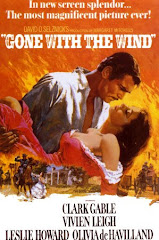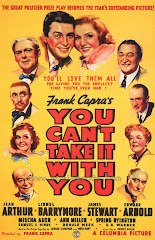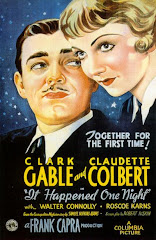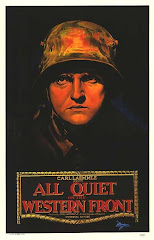Cast: Vivien Leigh, Olivia de Havilland, Clark Gable, Leslie Howard
Genre: Drama, Romance
Other Nominees: Dark Victory, Goodbye Mr. Chips, Love Affair, Mr. Smith Goes to Washington, Ninotchka, Of Mice and Men, Stagecoach, The Wizard of Oz, Wuthering Heights
This is the most intimidating synopsis I have had to write so far because what more is there to say that has not already been said about Gone With the Wind? If you search the internet you will find an endless sea of praise for this amazing film and in the end I fear that I have very little to add to it. So I will simply do what I can and talk about some of the surprises I found within this brilliant film.
This is an epic film with a run time of almost four hours and in this time we follow the story of one Scarlett O’Hara (Vivien Leigh). When we first meet Scarlett it is 1861 and she is the daughter of a wealthy southern plantation owner. We quickly learn that Scarlett is the center of her own universe, manipulating everyone around her to get her way, and content in the knowledge that every man she meets worships her. But her world comes to an abrupt end when war comes to the South and the Yankee army invades. We watch as she falls into desperate poverty, and then uses her honed powers of manipulation to claw her way out again. As a viewer you build a love/hate relationship with Scarlett, veering from loathing her wicked ways, towards pitying and admiring her resolve and then back to loathing again, and this tug of war on your heart carries throughout the entire film.
After multiple cases of her preying on men, including her obsession with a married man and her continued efforts to steal him away from his wife, you begin to wonder if she is capable of true love at all. When her first husband dies while away at war she laments that her “life is over” because “nothing will ever happen to me again”, clearly being more upset about her status as a widow than about the death of her husband. But beneath her selfish nature we slowly begin to learn that she is capable of loving a man even though her stubbornness leads to her fighting the feeling for almost the entire film.
We meet her true love interest early in the story in the form of the swaggering debonair Rhett Butler, played by Clark Gable. We have seen Clark before on this blog in It Happened One Night and Mutiny on the Bounty but this was clearly the role he was born to play. The single greatest thing about Rhett Butler is that, like Scarlett, he makes no apologizes for what he is. He fraternizes with prostitutes, drinks, smokes, gambles, and is content to do so. He is attracted to Scarlett from the moment he meets her but not for the same reason the other men fawn all over her. He loves Scarlett because he knows her, because in her he sees a female version of himself, and he seems to be the only man who understands what he is up against with her. His immunity to her ways makes for very entertaining interactions. He constantly pokes fun at her and calls her out when she tries to play her mind games and it really is hard not to start enjoying seeing it as much as he enjoys doing it.
Scarlett: Sir, you are no gentleman.
Rhett Butler: And you, Miss, are no lady.
The romance between the two is the central storyline of the film but it is set to an incredibly rich background. After the war starts there are some truly amazing special effects as the city of Atlanta gets bombarded by Sherman and the Yankee army. One scene recalls to my mind as Rhett leads a panicked horse and the ladies through an ammunition dump as explosions happen all around. A many storied building crashes down in flames in front of the party as they desperately try to escape the city. This is a film that cost a staggering 3.7 million dollars to make and in 1939 that was a lot of money! But the investment can be seen throughout as this film really does reach a standard of excellence that is rare in Hollywood.
Gone With the Wind is the first Oscar winning film to be shot in Technicolor, a technique that came with tremendous cost and ate up most of the aforementioned budget. While being the first color Oscar Winning film I was surprised to learn that shooting films in color was a technology that was a around since 1908 but was rarely used because of the expense involved. Hollywood made the first color feature film almost twenty years earlier in 1922 (The Toll of the Sea). This surprised me because most people I know consider The Wizard of Oz to be the first example of color being used in film.
Speaking of Oz it should be said that the nominations list for Best Picture in 1940 was very impressive and the fact that Gone With The Wind came out on top just emphasizes the magnitude of the film. Not only did it beat out Frank Capra directing his usual suspects of Jean Arthur and James Stewart in Mr. Smith Goes to Washington, John Ford directing John Wayne in the classic Stagecoach, but it also beat out The Wizard of Oz itself! Add to that list Goodbye Mr. Chips and Of Mice and Men and to me you have what could be the most hotly contended Best Picture nominations list of all time.
I will leave you with another link to American Film Institutes top 100 movie quotes of all time. I reference the list because Gone With the Wind gets three mentions which again highlights how significant a film this is. Below are the three quotes that made the list and their positions in parenthesis but frankly I think the quote that has the honor of calling itself the greatest movie quote of all time (at least according to AFI) needs no introduction:
As God is my witness, I’ll never be hungry again (59)
After all, tomorrow is another day! (31)
Frankly My Dear, I don’t give a damn. (1)
Full list: http://connect.afi.com/site/DocServer/quotes100.pdf?docID=242
Next Up: Rebecca





















































